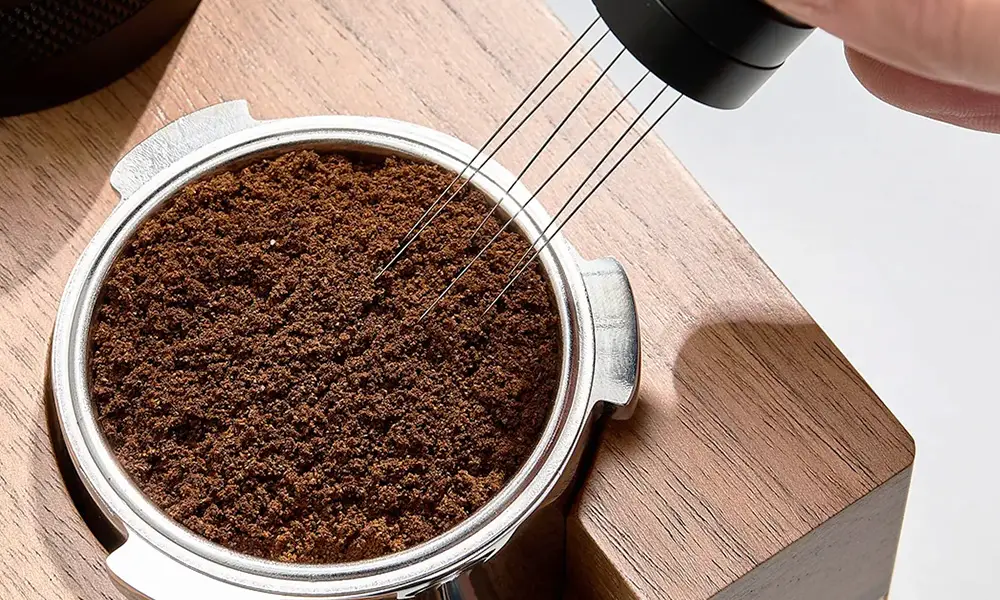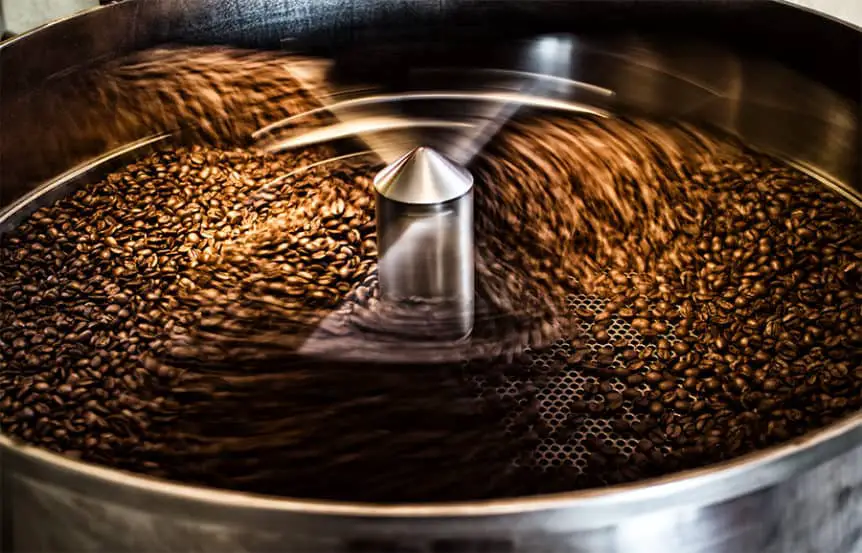
Coffee’s taste hinges on its roast level—light, medium, or dark—each pulling out different flavors from the same bean. A light roast might burst with fruity notes, while a dark one leans smoky and bold. But the roaster’s skill, the bean’s origin, and how it’s processed all play a role.
This post breaks down how roast levels affect taste, why it matters, and how to pick the right one for you. Whether you’re a coffee newbie or a brew geek, you’ll learn why that morning cup tastes the way it does.
What Are Coffee Roast Levels?
Coffee starts as the seed of a cherry-like fruit, grown on trees in places like Ethiopia or Nicaragua. The cherry’s outer skin (exocarp) is bitter, but its pulpy layer (mesocarp) is sweet, like a grape. Inside, two green seeds—our “coffee beans”—sit protected by a thin layer (endocarp). These green beans are soft, spongy, and smell grassy, with no roasted flavor. Roasting transforms them, unlocking aromas and tastes through heat-driven chemical changes.
Roasters heat beans to 350–500°F, triggering reactions like the Maillard reaction (browning sugars and amino acids) and caramelization (sweetening sugars). The longer and hotter the roast, the darker the bean and the more its flavor shifts. Here’s how each roast level tastes, based on industry standards and recent trends:
Light Roast
High acidity, bright, and fruity, with floral or tea-like notes. Think Ethiopian Yirgacheffe’s jasmine or Colombian’s lemon zest. Beans are light brown, like cinnamon, with no surface oil. They keep the bean’s origin flavors front and center.
Medium-Light Roast
A touch sweeter, with clear floral and fruit notes, like berry or apple. Acidity softens, and the body feels rounded. Beans are slightly darker, still oil-free, and show nuanced origin traits.
Medium Roast
Sugars caramelize fully, giving subtle caramel and cocoa flavors. Acidity balances with a medium body, and the beans look medium brown, like hazelnut. Great for showcasing both origin and roast, as in Nicaraguan beans with nutty, chocolatey hints.
Medium-Dark Roast
Acidity fades, and caramelized sugars turn bittersweet, like dark chocolate. Small oil droplets appear on the bean’s surface, and the body feels fuller. These suit bold palates, often used in espresso blends.
Dark Roast
Bold, smoky, and sometimes carbon-like, with minimal acidity. Flavors lean toward charred wood or spice, and beans are dark brown to black, with a shiny oil coating. Origin flavors fade, making it hard to tell a Kenyan from a Brazilian bean.
These are general guides—roasters tweak time, temperature, and cooling to dial in specific profiles. A skilled roaster can make a light roast sing with clarity or a dark roast rich without burning.
Light vs. Dark: Origin or Roast?
Light roasts let the bean’s origin shine. A light-roasted Ethiopian might taste of blueberries and jasmine, thanks to its high-altitude soil and heirloom varieties. A Colombian light roast could pop with citrus and toffee, reflecting its volcanic terroir. These roasts keep moisture and natural oils inside, preserving the bean’s unique DNA.
As roasts darken, heat overrides origin. Medium roasts strike a balance, blending caramelized sweetness with hints of the bean’s roots. Dark roasts, pushed past 430°F, lose most origin traits to smoky, roasty flavors. The bean’s moisture drops, and surface oils emerge, giving that glossy sheen. Dark roasts dominate espresso culture—think Italian-style ristretto—because their boldness cuts through milk.
Some folks swear by dark roasts, associating bitterness with “strong” coffee. But roasting burns off subtle flavors and some caffeine (light roasts actually pack more). Specialty coffee, booming in 2024–2025 with ~40% of U.S. sales favoring light roasts, leans toward brighter, sweeter profiles that highlight origin. Try a roast outside your norm—you might find light roasts creamier or dark ones smoother than expected.
Is Roasting an Art or Science?
Roasting is both art and science. The science lies in heat’s effect on beans. At ~320°F, the first crack hits—a pop as moisture escapes, doubling the bean’s size. Sugars caramelize, and the Maillard reaction builds complex flavors. At ~400°F, the second crack signals darker roasts, with oils surfacing. Roasters track temperature and time precisely, often using software to map profiles.
The art comes in reading the beans. A roaster listens for cracks, sniffs for grassy-to-toasty shifts, and eyes color changes. Split-second decisions—pulling beans now or in 10 seconds—separate perfect from burnt. Experience trumps tech; a seasoned roaster knows when a bean’s ready by instinct. Small-scale roasters, up 20% globally since 2020, and home roasters experiment to nail custom flavors.
Is Roasting Coffee Easy?
Roasting’s tough. Beans darken fast, and over-roasting ruins them. A batch can go from ideal to charred in moments if the heat’s not cut. Color alone isn’t enough—beans darken as they age, so roasters rely on smell (caramel to smoke), sound (cracks), and temp. Home roasters, using tools like popcorn poppers or dedicated machines, face the same stakes. A $50 popper works, but watch for the first crack (~8–10 minutes) and cool beans fast to stop roasting.
Brewing for Roast Levels
Match your brew to the roast for best results. Light roasts shine in pour-over or Aeropress, highlighting fruity and floral notes. Medium roasts suit drip or Chemex, balancing caramel and origin. Dark roasts excel in espresso or French press, where their bold, oily body stands out. Use clean equipment—old grounds taint even the best roast. Grind fresh, and adjust coarseness: fine for espresso, medium for drip, coarse for press.
Sustainability in Roasting
Roasting’s going green. Energy-efficient roasters, like solar-powered models, cut emissions, with 15% of U.S. roasters adopting them by 2024. Some recycle chaff (bean husks) for compost or biofuel. Buying from roasters who source Fair Trade or organic beans supports sustainable farms. Check labels—certified beans ensure eco-friendly practices from farm to cup.
Final Thoughts: Find Your Roast
Roast levels shape coffee’s soul, from light’s bright origin notes to dark’s smoky punch. No roast is “best”—it’s about what you love. Grab a light Ethiopian for a floral kick, a medium Nicaraguan for nutty balance, or a dark blend for espresso heft. Experiment with brews and roasts, and store beans airtight to keep them fresh (use within 2–4 weeks). Your perfect cup’s waiting.

